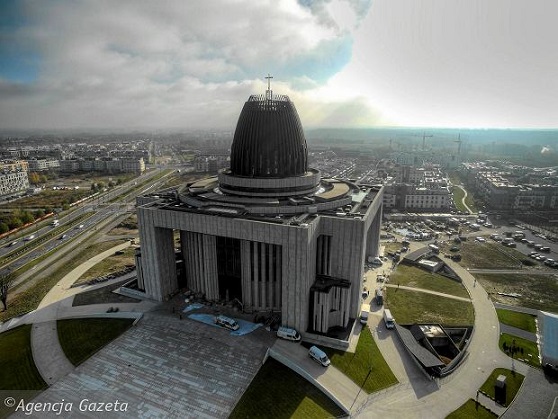
Warsaw has a new temple, promised two centuries ago
 |
Warsaw - The Polish capital has a new landmark. Polish President Andrzej Duda, Prime Minister Beata Szydło, and other officials of the ruling elite will today, on the country's Independence Day, attend the ceremonial opening of the Temple of Divine Providence, which was under construction for one and a half decades and cost nearly a quarter of a billion zlotys (approximately 1.5 billion crowns).
"Promises made to God must be kept," says Warsaw Cardinal Kazimierz Nycz, referring to the fact that the Polish parliament agreed to the construction of the temple as early as 1791 as an expression of gratitude for the May Constitution, the first in the Old Continent. Instead of the salvation of the homeland, however, it was followed by a defeat by Russian troops and the division of the kingdom among neighboring great powers.
Originally, as the newspaper Gazeta Wyborcza reminds us, the temple was to be built in a park that currently exists in the city center, but only the foundation stone was placed there.
During the era of communism, the primate of the Polish church gave up hope for building a new temple and consecrated one of the Warsaw churches to Divine Providence. However, in the 1980s, the idea returned, and in the 1990s, the concept of constructing a temple on an artificial island in the middle of the Vistula River emerged, but then one of the richest Poles donated a suitable plot of land to the church.
A cross was erected and consecrated at the site, later a cornerstone was added, specifically three stones from the first construction of 1792, from the Warsaw Cathedral, and from the monastery in Częstochowa, the country's main pilgrimage site.
There was also to be a stone on which, according to legend, the national hero Tadeusz Kościuszko knelt and prayed before the victorious battle of Polish insurgents against the Russians in 1794, which, however, did not avert the final defeat of the Poles. However, the stone could not be found.
Originally, the temple was supposed to look completely different. The visionary design of the winner of the competition, in which more than a hundred architects competed, was rejected by the church. A monumental building with a Greek cross floor plan measuring 84 by 84 meters, rising to a height of 75 meters, was favored.
However, critics denounce it as a "victory of banality." The view of the "monstrous building," protruding from the surrounding low buildings, is unavoidable in the wider surroundings, similar to the previous landmark of Warsaw, the Stalinist Palace of Culture and Science, which is approximately three times higher than the new temple.
While the aforementioned palace in the very center of the city has earned nicknames "Stalin's gift" and "Revenge of the crazy pastry chef" from mockers, the new temple in the rather peripheral district of Wilanów is nicknamed "Lemon Squeezer" due to the characteristic shape of the dome, which is 30 meters high.
"Those who have seen the construction only from the outside will find it hard to believe that it has a delicate impression inside," the newspaper noted about the "best part" of the sanctuary. It gives the impression of an inverted chalice, with light streaming in through an opening in the dome, and above everything, at a height of 75 meters, a cross seems to float. The work is crowned by a wall, curved like an 'S' and as high as a seven-story building. The temple also features underfloor heating, which is provided by 19 kilometers of piping.
The temple will also house a museum dedicated to Polish Pope John Paul II and Cardinal Stefan Wyszyński, who led the Polish church during communism.
The English translation is powered by AI tool. Switch to Czech to view the original text source.
1 comment
add comment
Subject
Author
Date
Obávám se ...
Mirko Baum
17.11.16 10:44
show all comments









